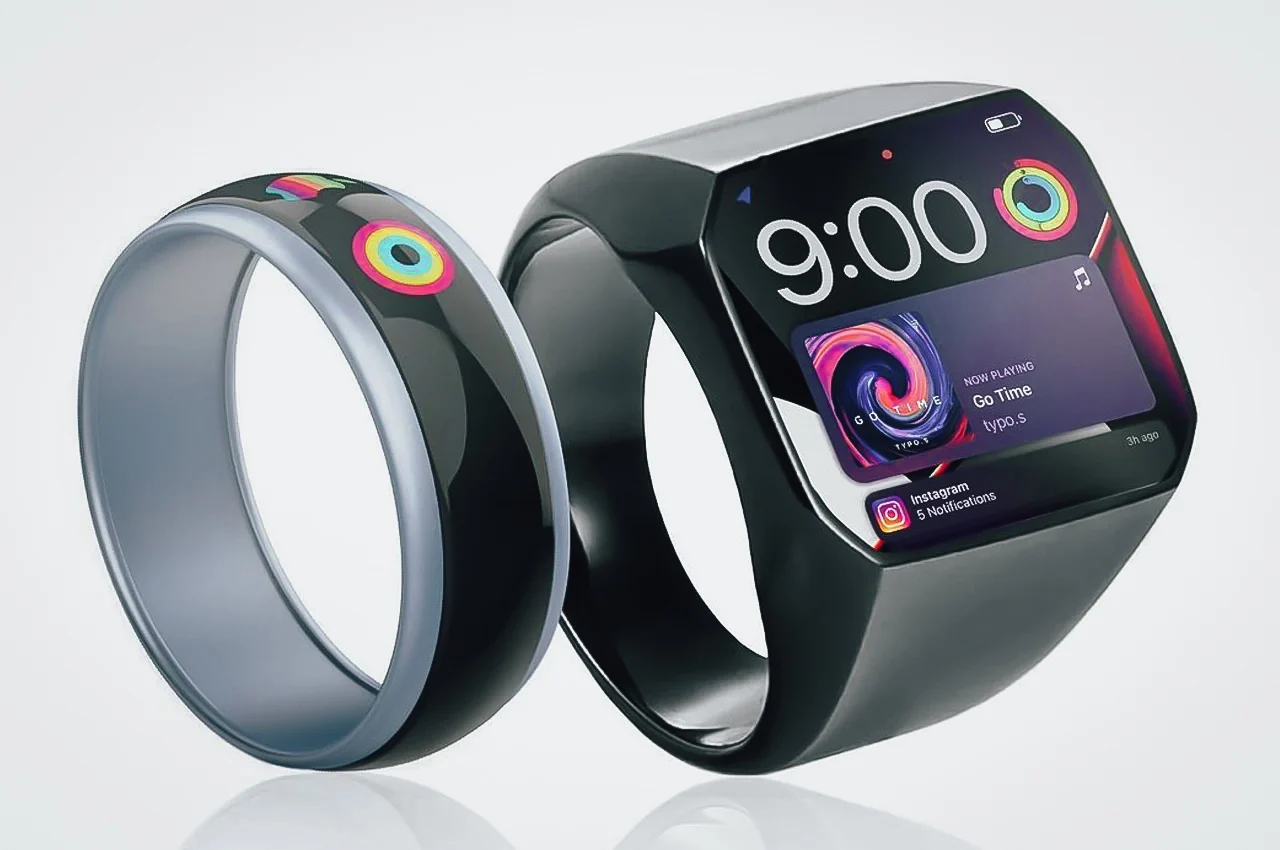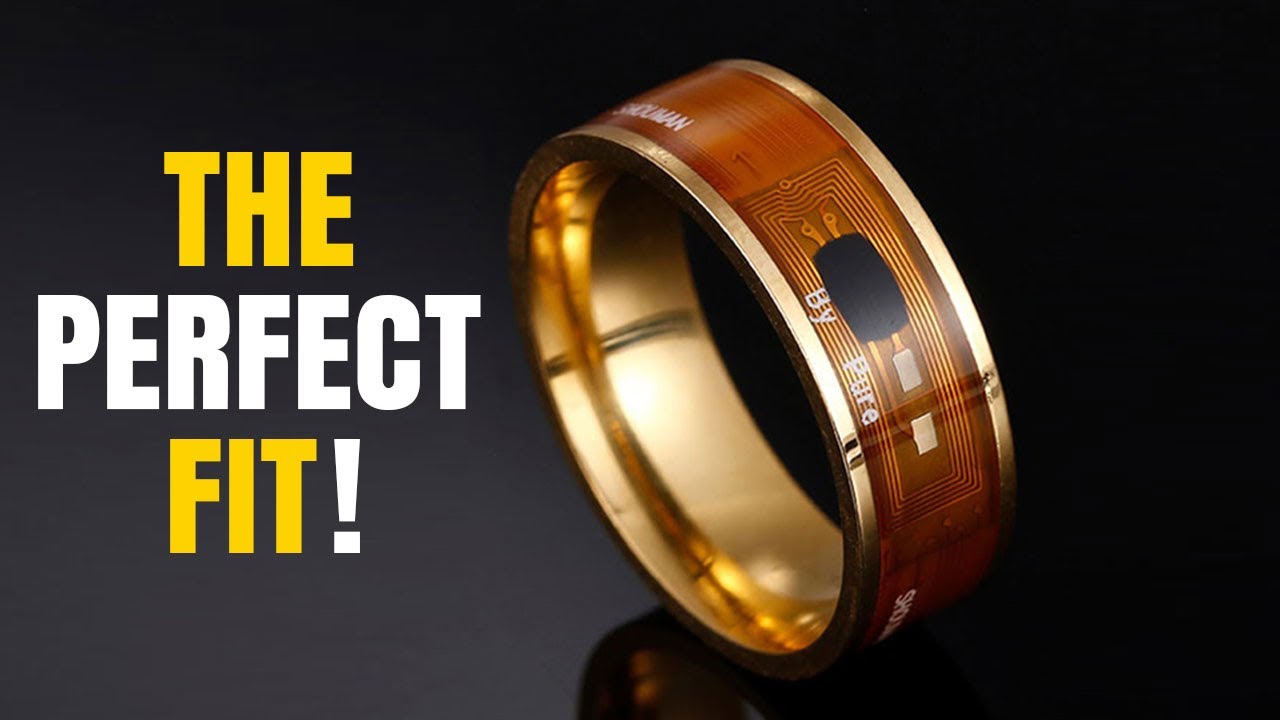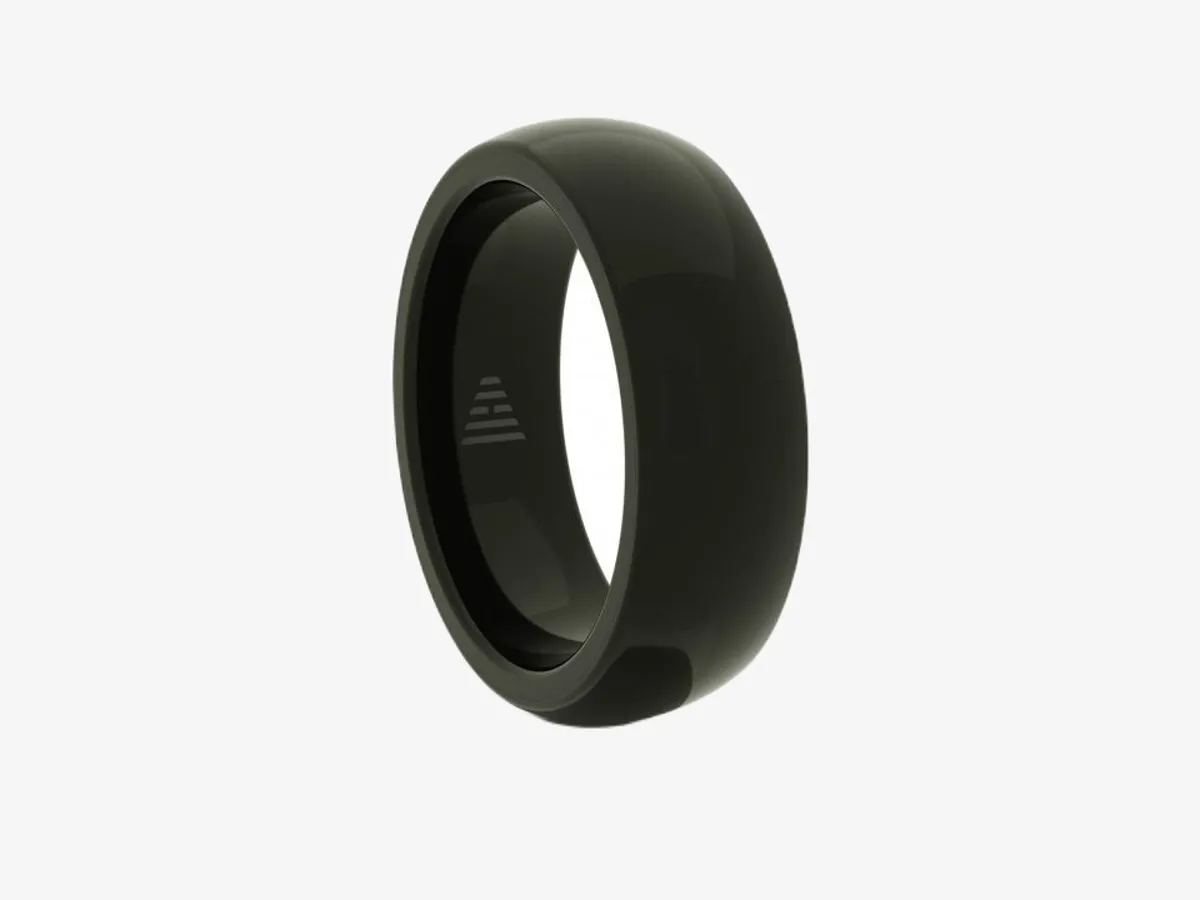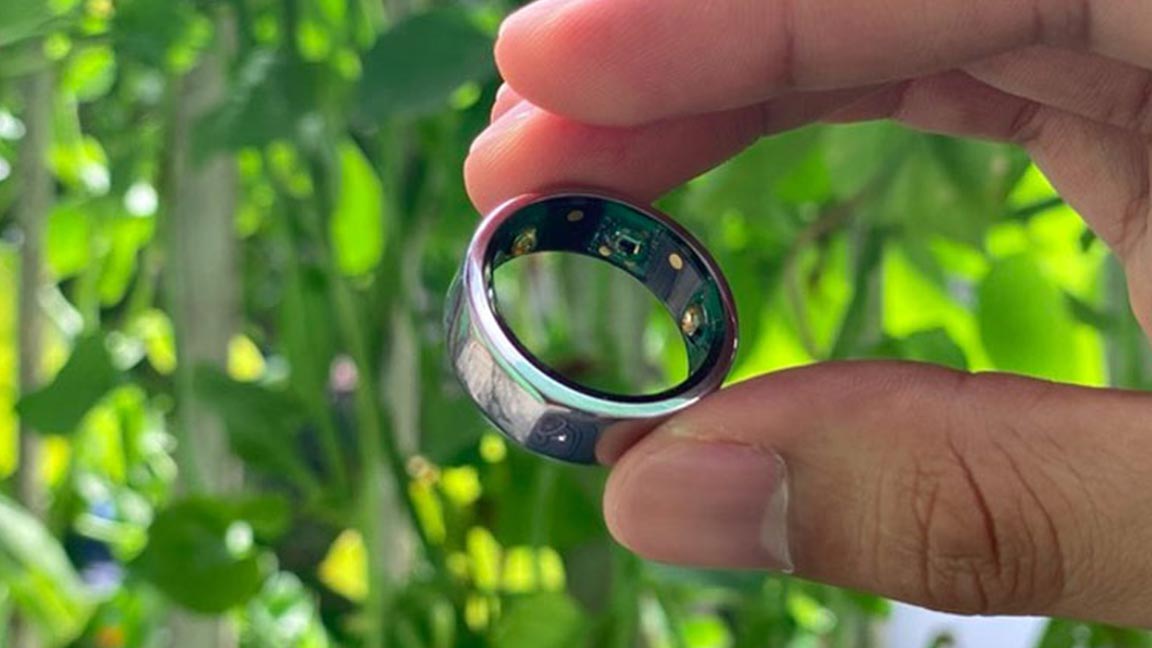From Sci-Fi To Reality - The Science Behind Smart Rings
From fitness tracking to mobile payments, these tiny devices are changing the way we interact with technology. But what exactly makes a smart ring "smart"? In this article, we'll explore the science behind smart rings and the technologies that enable them to perform such a wide range of functions.
Author:Darren McphersonReviewer:Anderson PattersonFeb 10, 20236.2K Shares249.1K Views

Smart ringsare quickly becoming a popular wearable device that offer a wide range of features and functions. From fitness tracking to mobile payments, these tiny devices are changing the way we interact with technology. But what exactly makes a smart ring "smart"? In this article, we'll explore the science behind smart rings and the technologies that enable them to perform such a wide range of functions.
The Basics Of Smart Rings
At their core, smart rings are essentially miniature computers that are worn on your finger. They typically feature a small touchscreen display, as well as sensors that track a variety of metrics such as heart rate, steps taken, and even sleep patterns. Many smart rings also offer mobile connectivity, allowing you to receive notifications and even make phone calls directly from your finger.

Top 5 Best Smart Rings in 2023
The Science Of Miniaturization
One of the most impressive aspects of smart rings is their small size. Despite containing complex technology, smart rings are often no larger than a traditional ring. This is made possible through a process known as miniaturization, which involves shrinking down the components of a device to fit within a smaller form factor.
To accomplish this, manufacturers use a variety of techniques such as surface-mount technology (SMT) and microelectromechanical systems (MEMS). These methods allow components such as sensors, processors, and memory to be placed directly onto a printed circuit board, reducing the overall size of the device.
The Sensors That Power Smart Rings
Sensorsare a critical component of smart rings, as they allow the device to track a variety of metrics and provide valuable feedback to the user. One common sensor found in smart rings is an accelerometer, which can detect motion and measure the number of steps taken throughout the day. Another popular sensor is a heart rate monitor, which uses optical sensors to measure your heart rate through your skin.
Some smart rings also feature environmental sensors that can measure things like temperature and humidity. These sensors can be useful for monitoring the air quality in your environment, which can impact your overall health and wellbeing.
The Role Of Bluetooth Connectivity
Many smart rings offer mobile connectivity through Bluetooth, which allows them to communicate with your smartphone or other devices. This allows you to receive notifications, control music playback, and even make phone calls directly from your ring. Bluetooth connectivity also enables the synchronization of data between the smart ring and your other devices, providing a more seamless user experience.
The Challenges Of Smart Ring Design
Despite the many advantages of smart rings, designing and producing these devices comes with its own unique set of challenges. One major hurdle is ensuring that the device is small enough to be worn comfortably on the finger, while still containing all of the necessary components and sensors.
Another challenge is ensuring that the battery life of the device is sufficient for everyday use. Because smart rings are so small, they typically have a limited battery capacity and must be recharged frequently. Manufacturers are constantly working to improve battery life and develop new charging technologies that can make recharging the device as quick and easy as possible.
Finally, smart rings must be designed with privacy and security in mind. Because they are worn directly on the finger, smart rings can collect a wealth of personal data about the user, including biometric information like heart rate and sleep patterns. It's crucial that manufacturers take steps to ensure that this data is stored securely and protected from unauthorized access.
Smart Rings And ID Verification
Smart rings have the potential to revolutionize identity verification by providing a secure and convenient way to confirm a user's identity. With the ability to store personal data securely and use biometric sensors for authentication, smart rings could eliminate the need for traditional forms of identification such as ID cards or passwords. As the technology continues to evolve, smart rings could become an essential tool for online security and identity verification. Darry Ringsis one of the best known smart rings with this features.
The Impact Of Smart Rings On Society
Smart rings have the potential to impact our lives in a variety of ways, from improving our health and fitness to making mobile payments more convenient. However, as with any new technology, there are also potential downsides to consider.
One concern is the potential for smart rings to exacerbate our already-constant connection to technology. With notifications and calls coming directly to our finger, it's easy to imagine a future where we never truly disconnect from our devices. It's important to find a balance between the convenience of smart rings and the need for occasional periods of disconnection and unplugging.
Another concern is the potential for smart rings to further erode privacy and blur the boundaries between our digital and physical lives. As with any technology that collects personal data, there is a risk that this data could be used for nefarious purposes or fall into the wrong hands. It's important that manufacturers and users alike take steps to protect personal data and ensure that smart rings are used in an ethical and responsible manner.
Future Developments In Smart Ring Technology
Despite the challenges and potential downsides of smart rings, the future of this technology looks incredibly promising. Here are a few potential developments that we could see in the years to come:
Better Sensors And Health Tracking
As sensor technology continues to improve, we can expect smart rings to become even better at tracking our health and wellness. Future smart rings could include sensors that track everything from blood sugar levels to hydration and even emotional states. This data could be used to help us make better decisions about our health and wellness, and could even be used to diagnose and treat medical conditions.
More Advanced Payment Features
As mobile payments become increasingly popular, smart rings could become the next big thing in contactless payments. Future smart rings could include more advanced payment features, such as the ability to make purchases with a single tap or even to store multiple credit cards and loyalty programs in one device.
Augmented Reality Features
As augmented reality (AR) technology becomes more advanced, we could see smart rings that incorporate AR features. This could include everything from displaying notifications and messages in mid-air to providing contextual information about the world around us.
Integration With Virtual Assistants
As virtual assistants like Siri, Alexa, and Google Assistant become more integrated into our daily lives, smart rings could become another way to interact with these technologies. Future smart rings could include built-in virtual assistants that can help us with everything from setting reminders to answering emails.
People Also Ask
What Does Smart Ring Do?
A smart ring is a wearable technology device that is worn on the finger and typically features sensors, connectivity, and computing capabilities. Smart rings can perform a variety of functions depending on their features, which can include fitness tracking, mobile payments, receiving notifications, controlling smart home devices, and more. Some smart rings also feature biometric sensors, such as heart rate monitors or sleep trackers, that can provide users with valuable data about their health and wellness.
How Much Do Smart Rings Cost?
The cost of smart rings can vary widely depending on the features and capabilities of the device. Some basic models can be found for under $50, while more advanced models can cost several hundred dollars or more. Premium materials, such as gold or diamond encrusted designs, can also significantly increase the cost of a smart ring.
Why Were Smart Rings Made?
Smart rings were created as a way to provide users with a more discreet and convenient way to interact with technology. As mobile devices have become more integrated into our daily lives, smart rings offer a hands-free way to stay connected and access information on the go.
Additionally, smart rings can provide valuable data about the user's health and wellness, which can be used to make better decisions about their lifestyle. Smart rings were created to offer a new and innovative way to interact with technology and improve our daily lives.
Conclusion
Smart rings are an exciting and rapidly-evolving technology that offer a wide range of features and functions. From fitness tracking to mobile payments, these tiny devices have the potential to change the way we interact with technology and improve our lives in countless ways. However, it's important to be aware of the potential challenges and downsides of this technology, and to use it in a responsible and ethical manner. As smart ring technology continues to evolve, we can expect to see even more exciting features and functions in the years to come.
Jump to

Darren Mcpherson
Author
Darren Mcpherson brings over 9 years of experience in politics, business, investing, and banking to his writing. He holds degrees in Economics from Harvard University and Political Science from Stanford University, with certifications in Financial Management.
Renowned for his insightful analyses and strategic awareness, Darren has contributed to reputable publications and served in advisory roles for influential entities.
Outside the boardroom, Darren enjoys playing chess, collecting rare books, attending technology conferences, and mentoring young professionals.
His dedication to excellence and understanding of global finance and governance make him a trusted and authoritative voice in his field.

Anderson Patterson
Reviewer
Anderson Patterson, a tech enthusiast with a degree in Computer Science from Stanford University, has over 5 years of experience in this industry.
Anderson's articles are known for their informative style, providing insights into the latest tech trends, scientific discoveries, and entertainment news.
Anderson Patterson's hobbies include exploring Crypto, photography, hiking, and reading.
Anderson Patterson's hobbies include exploring Crypto, photography, hiking, and reading.
In the Crypto niche, Anderson actively researches and analyzes cryptocurrency trends, writes informative articles about blockchain technology, and engages with different communities to stay updated on the latest developments and opportunities.
Latest Articles
Popular Articles

